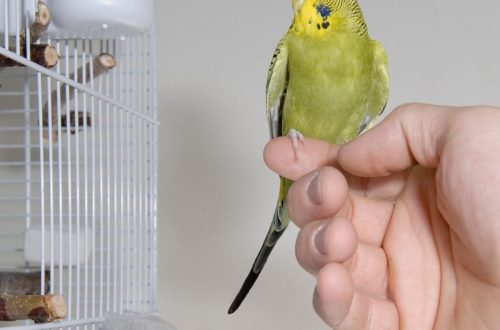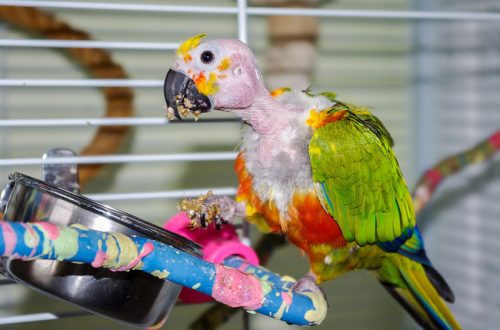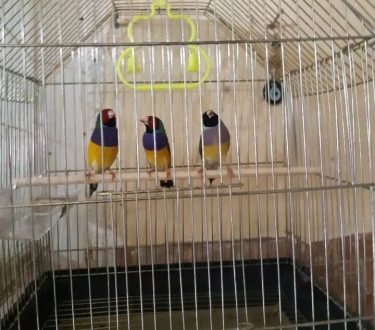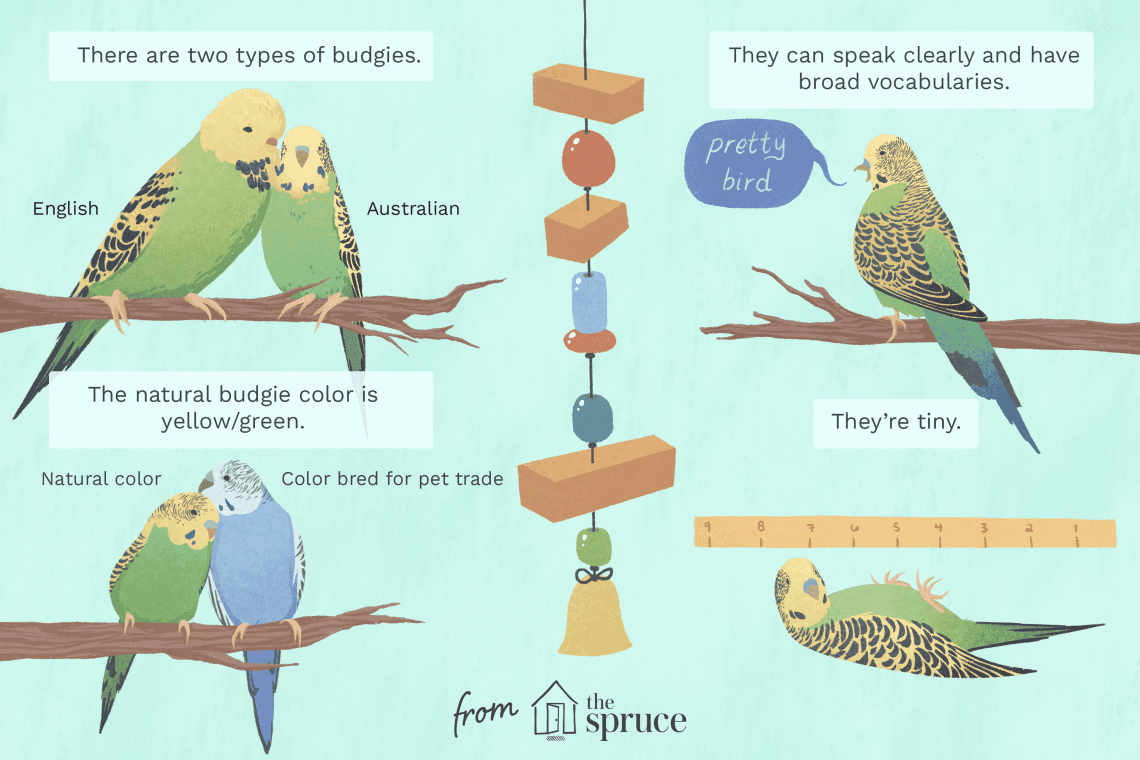
Budgerigar Behavior
Parrots are very interesting and mischievous creatures, and watching them brings a lot of pleasure, cheers up and amuses any person.
Often, some of the habits of our feathered friends are perplexing and there is a desire to understand the reason for such movements, postures and strange sounds.
By carefully studying your bird, you can come to the conclusion that the behavior of parrots is due to certain factors: biological (puberty, instincts) and external (lifestyle, nutrition and living conditions of the bird).
Budgerigars have a changeable mood: just now they were having fun and screaming, and now they are sitting ruffled and grumbling.
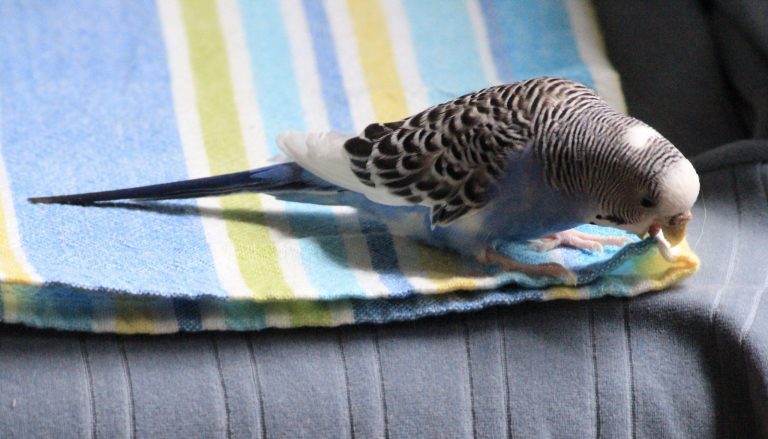
It is very important to understand when the behavior of the bird is the norm, and when it is worth worrying.
Hand budgerigars in the first days of the house are quickly mastered and begin to study everything vigorously with interest.
If you come across a wild parrot, then the bird will be scared to sit in one place and watch in suspense what is happening outside the cage.
Contents
A few things that are normal for a parrot in a new home
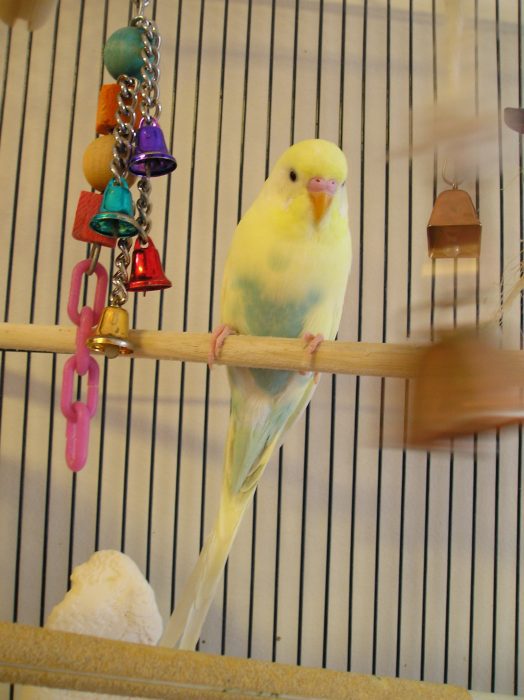
- it begins to seem to you that the bird does not drink water at all – in fact, parrots are light drinkers, especially if fresh fruits and vegetables are constantly present in their diet. Thus, they get enough water and there is no need to worry;
- also, if the bird is in the house for the first days, then such suspicions apply to food – it seems to the owners that the baby is not eating. In fact, the bird may not eat at first, and then stealthily, when you can’t see, approach the feeder.
Try to install the feeder so that the new resident does not have to turn his back to the room, so he will feel more relaxed without being distracted by looking around;
- does not eat fruits, vegetables, greens and cereals – perhaps the bird does not know that this is food. To train to eat something other than a grain mixture is desirable even in the process of taming, you will have to introduce the bird to different types of food;
- when you try to get closer, the wavy will either start to rush around the cage, or will try to move as far as possible from you. This behavior is quite normal for a “newbie”, so you need to be sympathetic to his reaction and help the bird adapt as quickly as possible.
After the parrot gets used to it, its character, individual habits will begin to appear, it will be interested in surrounding objects and make contact with you.
The behavior of budgerigars during the mating season
At some point, your affectionate and cheerful bird may begin to behave aggressively or too intrusively. This behavior is explained by changes in the hormonal background, puberty. These processes proceed differently in females and males.
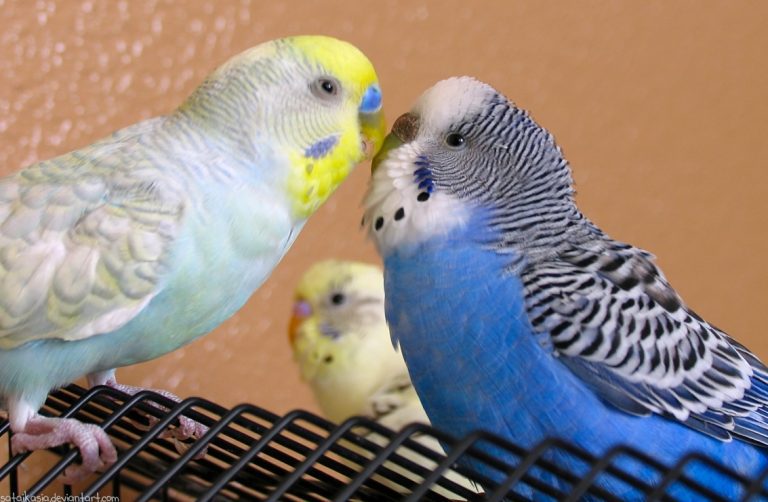
Males become active suitors. If one budgerigar lives with you, he may choose one of his toys, some thing, or you as an object of love.
Don’t let the bird feed its reflection in the mirror!
It is advisable not to initially hang the mirror in the cage, and if it is, then remove it. A bird can experience tremendous stress seeing its own reflection and perceiving it as a second parrot that does not reciprocate. In addition, there were cases when, showing parental instinct, the parrot “feeding” the mirror was itself on the verge of exhaustion.
If you do not like the obsessive courtship of the wavy (feeding the ear, rubbing the tail against the hand, etc.), try to switch the attention of the bird to something else as gently as possible, do not drive away, scold and offend the feathered one. The parrot thus shows its special attitude towards you, so all its courtship must be gently stopped by playing with it, diverting attention to toys.
During the period of a hormonal surge, males become very loud, active and melodious.
The behavior of the female is slightly different: she begins to pick up a nest for herself, she can even choose a large feeder as it, during walks the bird devotes a lot of time to paper – it gnaws it, folds it. If the female crouches on a perch, coos and spreads her wings, she is ready to mate.
During the mating season, females become much more aggressive than males, if the bird lives alone, this does not prevent her from starting to lay eggs. In this case, the owner needs to be careful and make sure that this period passes without harming the health of the bird.
The behavior of budgerigars during molting
Shedding is a natural process of gradual feather replacement, so don’t worry. The following habits do not necessarily all have to appear in your parrot.
During molting, the parrot becomes aggressive, alert, irritable, distrustful, his appetite decreases, he often itches on the perch and the bars of the cage, there is no desire to go for a walk, he does not make contact at all or is very reluctant, sits ruffled among the fallen feathers and fluff .
Reading the body language of a budgerigar:
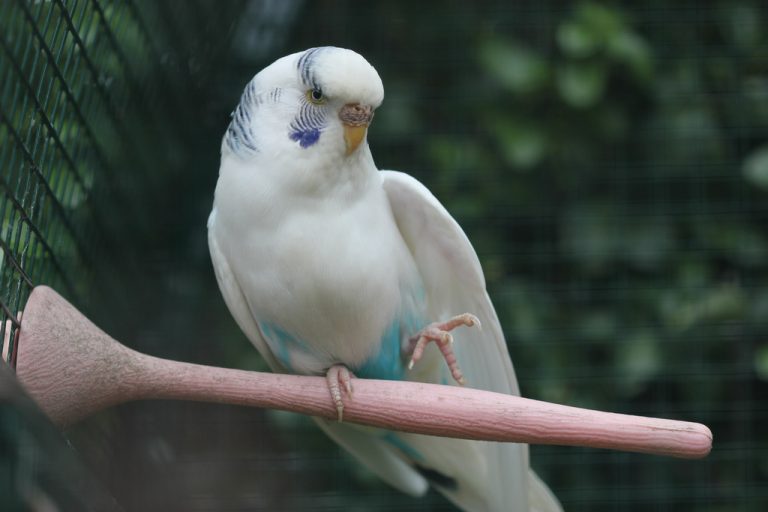
- sits on a perch with his paw tucked and his eyes closed – the bird is resting and feels safe;
- you noticed a slight trembling of the bird’s feathers with a paw tucked under the abdomen – the parrot is calm, relaxed and satisfied;
- light trembling of wings and active trembling of feathers on the chest – the bird is excited and excited;
- sometimes sneezes – parrots tend to sneeze: during molting, when cleaning feathers or after “picking” in the feeder;
- fluffs feathers, looks like a ball that inflates and deflates – in this way the bird puts itself in order, this is one of the moments of hygiene;
- during sleep or in a nap, crackles and creaks are heard – burping food from the goiter and chewing, a calm and satisfied state;
- sleeps with his head buried in the wing – the phase of deep sleep in a healthy parrot;
- fluffed up and abruptly stopped tweeting – a sign of a change in mood and discontent (someone else came up, you interrupted the interesting occupation of the bird and intervened at the wrong time);
- the parrot often rubs (as if wiped) its head against objects in the cage: a mineral stone, a clothespin, a perch, cage bars – molting or an attempt to get rid of adhering husks, crusts, particles of food or water;
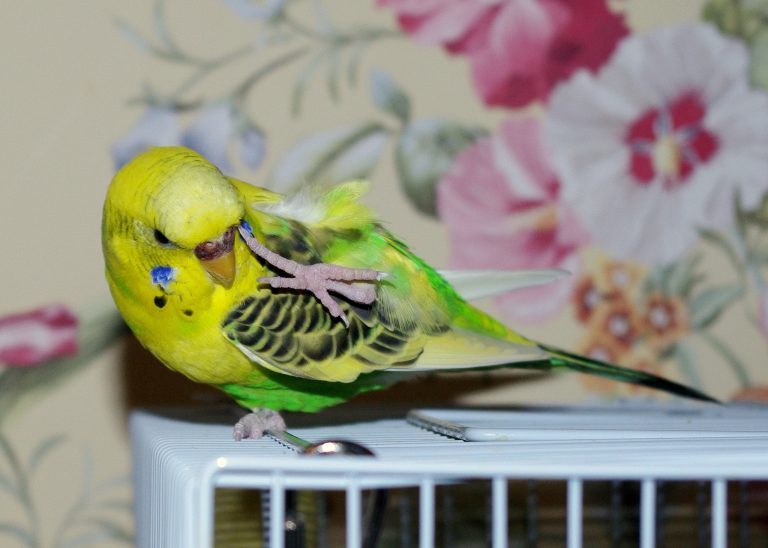
- constantly swarming in feathers – parrots are very clean and pointing “beauty” takes them quite a lot of time. Only nervous behavior, sharp bursts of scratching, not related to the molting period, should cause you concern;
- makes an incomprehensible head movement, opens its beak and stretches out its tongue – in this way the bird pushes the grain from the crop into the esophagus;
- rubs the booty against various objects, fluffs up the “cap” on the head and the pupils actively narrow and expand – evidence of puberty;
- throws grains out of the feeder, “dives” in it and sits for a long time – this behavior is typical of young chicks, if it is a female, she may be looking for a nest, it may also be a search for entertainment due to the lack of toys and a companion in the cage, or the bird has not been for a long time on a walk and looking for a way to get out on his own;
- flapping its wings in a cage – warm-ups inside the cage are quite normal, the bird tries to keep its wings in good shape;
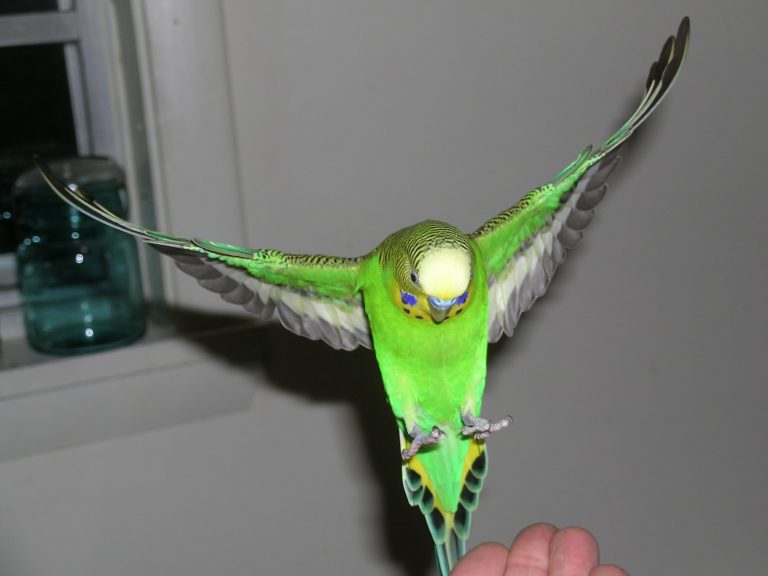
- sits spreading its wings – this behavior can often be seen after active flights and in the hot season;
- as soon as you approach the cage, the parrot raises its wings, sometimes stretches its paw back – in this way the bird declares its readiness to play, walk or communicate. The parrot warms up and arranges “pulls”;
- when approaching, it begins to chirp – in this way it tries to scare and warn that it can attack;
- the parrot flaps its wings and screams abruptly – the bird is outraged;
- silently rushes around the cage, flaps its wings, jumps are sharp and nervous – the bird is restless, frightened, perhaps there are strangers in the room who frighten it or annoying sounds have appeared – we are talking about isolated cases if the bird constantly behaves like this, regardless of the situation, perhaps her neurosis. Cover the cage and take it to a quiet room, let the parrot calm down and recover;
- if your budgerigar hangs upside down or starts doing so as soon as you enter the room – this is a way to attract attention and pampering;
- after long flights or other loads, the bird begins to shake its tail up and down – a way to normalize breathing. But, if a parrot often behaves this way without reason, it is worth consulting with an ornithologist.
Such features of the behavior of budgerigars are the norm and confirm the healthy state of the bird.
Also remember that there are always exceptions to the rules. Some of your parrot’s habits may mean quite the opposite. It also happens that the bird likes to sleep on the table, being next to the owner or chasing a ball along the bottom of the cage.
Other types of parrots also have interesting behavioral habits. So, the female lovebird, during the mating season, “draws” strips of paper with her beak and inserts them into her tail plumage. In nature, birds in this way carry twigs and tree bark for their future nest.
Jaco, at the sight of the owner, is marking time with raised trembling wings, from the outside it seems that the bird wants to take off, but this is just a request from the parrot to take it in its arms.
Among the Amazons, one can observe a fight using beaks – birds try to grab each other by the beak. This is quite normal behavior for parrots, there is no place for aggression, as a rule, it is associated either with puberty, or it is a form of communication in the form of a game.
After such a “battle”, the birds have no injuries, everything ends with sorting out feathers from each other and “scratching”.
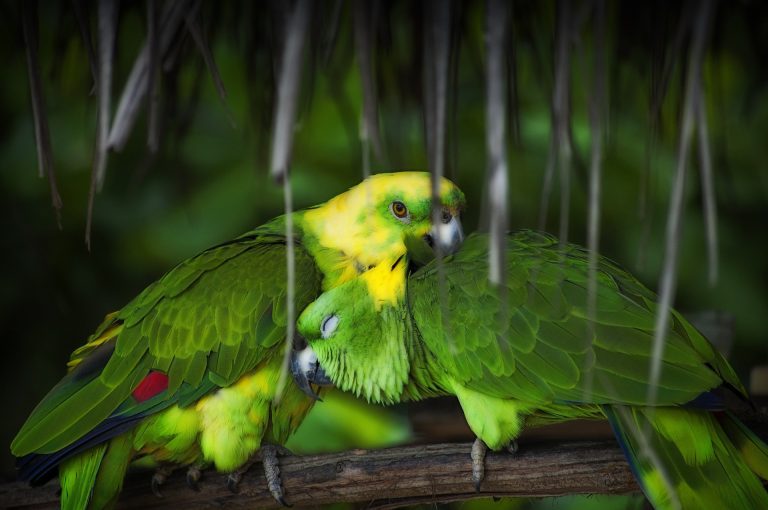
The behavior of cockatoo parrots during the mating season cannot go unnoticed. They fluff up the tuft and demonstrate to the females and those around him the beauty. Also, raised feathers on the head can mean a demonstration of one’s territory.
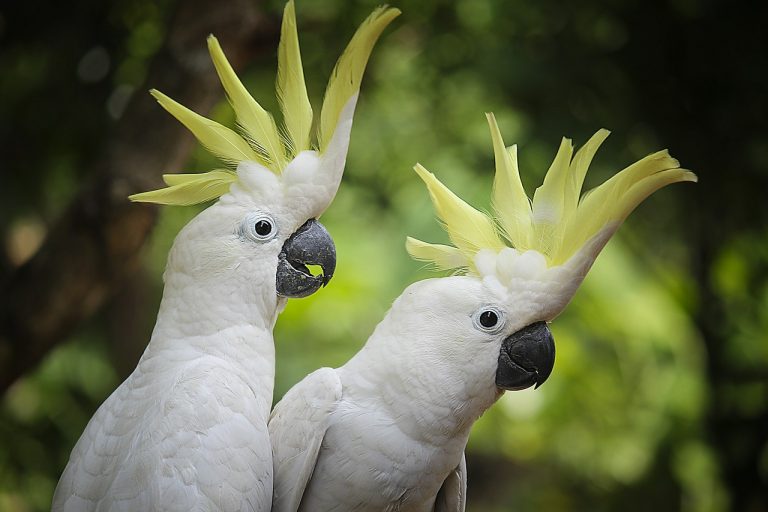
Monk parrots, when they are very excited or feel defenseless, “fall into childhood” – their movements resemble a hungry chick begging for food: the bird trembles with folded wings, trembles and quickly nods its head.
If the wings of a parrot are lowered, this phenomenon is quite normal in young birds, and this can also be observed after swimming or in the hot season. But if at the same time the bird sits in a corner at the bottom of the cage, fluffed up, this is a clear sign of illness.
Large species of parrots are still those simulators, if it seemed to them that you caressed him for little time or he didn’t stay on the handles for long, then when you try to return the bird to the perch in the cage or to the perch, the parrot “weakens” before our eyes, unable to stand on paws, and even more so to sit on a perch.
If you follow the lead of the feathered cunning every time, his performances will become more sophisticated.
When a parrot with dilated pupils presses to the ground with its neck stretched out, feathers and tail fluffed out, this means that the bird is furious, it is furious and can bite at any moment.
One way or another, all the considered habits of our wonderful pets can be seen in different types of parrots.
Sometimes, their body language is more expressive than human speech. The main thing is to be attentive to your pet and the slightest non-standard behavior for a parrot will not go unnoticed by you.



